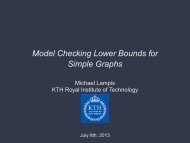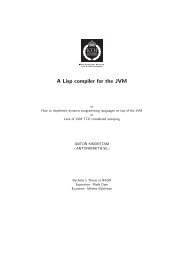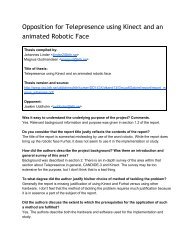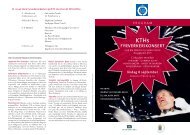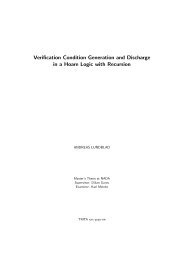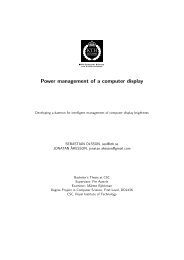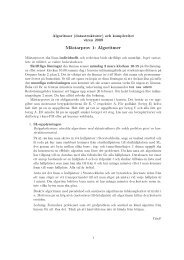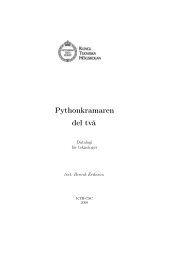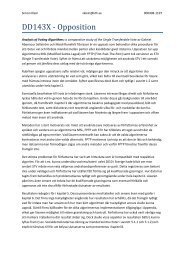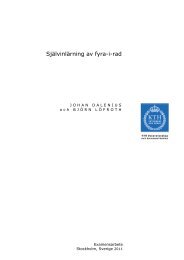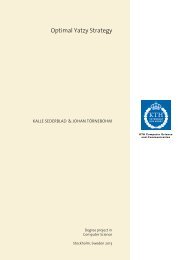Evaluation of Automatic Text Summarization - KTH
Evaluation of Automatic Text Summarization - KTH
Evaluation of Automatic Text Summarization - KTH
You also want an ePaper? Increase the reach of your titles
YUMPU automatically turns print PDFs into web optimized ePapers that Google loves.
6 CHAPTER 1. SUMMARIES AND THE PROCESS OF SUMMARIZATION<br />
by word parsing to rhetorical discourse parsing as well as more statistical methods<br />
or a mixture <strong>of</strong> all.<br />
1.2.1 Application Areas<br />
The application areas for automatic text summarization are extensive. As the<br />
amount <strong>of</strong> information on the Internet grows abundantly, it is difficult to select relevant<br />
information. Information is published simultaneously on many media channels<br />
in different versions, for instance, a paper newspaper, web newspaper, WAP 1<br />
newspaper, SMS 2 message, radio newscast, and a spoken newspaper for the visually<br />
impaired. Customisation <strong>of</strong> information for different channels and formats is<br />
an immense editing job that notably involves shortening <strong>of</strong> original texts.<br />
<strong>Automatic</strong> text summarization can automate this work completely or at least<br />
assist in the process by producing a draft summary. Also, documents can be made<br />
accessible in other languages by first summarizing them before translation, which<br />
in many cases would be sufficient to establish the relevance <strong>of</strong> a foreign language<br />
document. <strong>Automatic</strong> text summarization can also be used to summarize a text<br />
before an automatic speech synthesizer reads it, thus reducing the time needed to<br />
absorb the key facts in a document. In particular, automatic text summarization<br />
can be used to prepare information for use in small mobile devices, such as a PDA, 3<br />
which may need considerable reduction <strong>of</strong> content.<br />
1.2.2 Approaches to <strong>Automatic</strong> <strong>Text</strong> <strong>Summarization</strong><br />
<strong>Automatic</strong> <strong>Text</strong> <strong>Summarization</strong> is a multi-facetted endeavor that typically branches<br />
out in several dimensions. There is no clear-cut path to follow and summarization<br />
systems usually tend to fall into several categories at once. According to (Sparck-<br />
Jones 1999, Lin and Hovy 2000, Baldwin et al. 2000), among others, we can roughly<br />
make the following inconclusive division.<br />
Source <strong>Text</strong> (Input):<br />
• Source: single-document vs. multi-document<br />
• Language: monolingual vs. multilingual<br />
• Genre: news vs. technical paper<br />
• Specificity: domain-specific vs. general<br />
• Length: short (1-2 page docs) vs. long (> 50 page docs)<br />
• Media: text, graphics, audio, video, multi-media<br />
1 Wireless Application Protocol, a secure specification that allows users to access information<br />
instantly via handheld wireless devices such as mobile phones, pagers and communicators.<br />
2 Short Message Service, the transmission <strong>of</strong> short text messages to and from a mobile phone,<br />
fax machine and/or IP address. Messages must be no longer than 160 alpha-numeric characters.<br />
3 Personal Digital Assistant small mobile hand-held device that provides computing and information<br />
storage and retrieval capabilities, <strong>of</strong>ten contains calendar and address book functionality.



